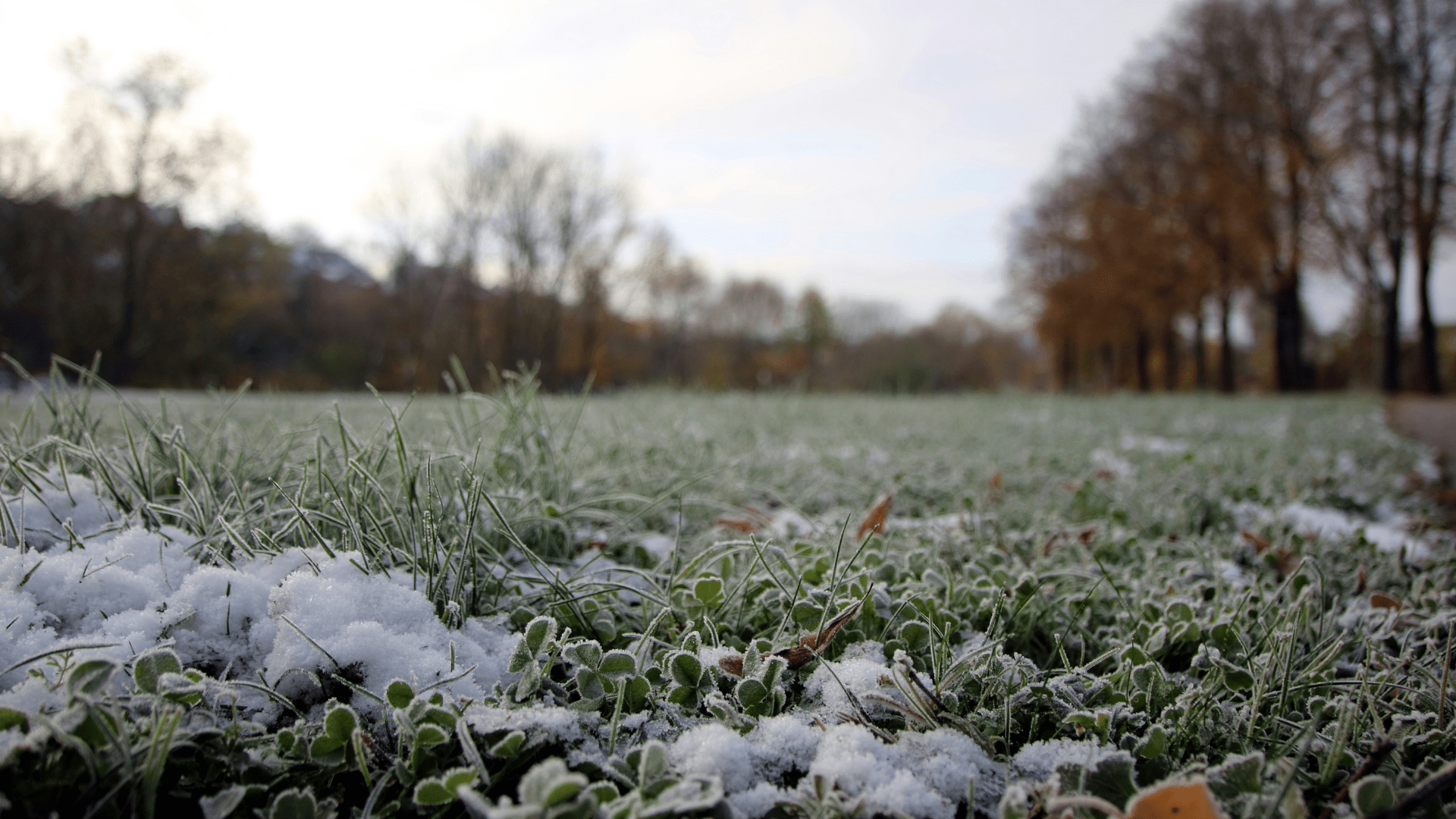Winter might make your lawn look like it’s switched off, but it still needs care. Roots are quietly growing, moisture is shifting through the soil, and the choices you make now decide how green and healthy it will be in spring. That’s why proper winter grass care matters, even if the lawn looks asleep
In this guide, we’ll walk through the most common winter lawn care mistakes, what to do instead, and how cordless garden tools can make lawn maintenance in winter simple and stress-free.
Winter Lawn Care Mistakes to Avoid
Your lawn might not need much attention in the colder months, but the wrong move now can set it back for spring. From mowing too short to letting leaves pile up, these are the most common mistakes in winter lawn care.
Cutting Grass Too Short in Winter
It’s tempting to give the lawn a close cut before winter, but short grass is more fragile in cold, wet weather. Cutting too low reduces the leaf surface, which your turf needs to photosynthesise and stay healthy through the darker months. It also exposes the crown and roots, making them more vulnerable to frost damage and disease.
The best way to maintain a lawn in winter is to keep it slightly longer than usual. Raise the mower height a notch so grass blades can protect the soil beneath, while still looking tidy. An EGO cordless lawn mower makes this easy - quiet, precise, and powerful enough to handle damp winter growth without scalping the turf.
Tip: If you’re giving your mower a rest, don’t forget to service it properly. Our end-of-season mower maintenance guide has you covered.
Walking on Frosty or Waterlogged Grass
Grass blades might look tough, but they’re delicate when frozen or waterlogged. Walking across a frosty lawn crushes the frozen cells inside each blade, leaving blackened footprints that won’t heal until spring. On soggy ground, footsteps can compact the soil, squeezing out the air pockets roots need to breathe and making drainage problems worse.
Limiting foot traffic preserves soil structure and stops blades from snapping under frost. If you need to cross the lawn, spread the load with stepping boards to avoid long-term damage. Even if you stay off the lawn, winter brings another quiet threat: moss and thatch.
Ignoring Moss and Thatch
Moss and thatch might look like minor nuisances, but both can quietly suffocate your lawn. Moss spreads fast in damp, shady corners, while thatch - a dense layer of dead stems and roots - builds up just beneath the surface. Together, they block water, air and light, leaving the grass weak and patchy.
A little winter lawn maintenance goes a long way here. On a mild, dry day, rake out light patches of moss and lift the thatch before it compacts further. For larger areas, the EGO DA1400 dethatcher attachment makes the job quicker and more effective. By clearing debris and opening up the soil, it helps roots breathe, reduces disease risk, and keeps your lawn in better shape for spring growth.
Forgetting Drainage
Heavy winter rain can quickly turn a lawn into a soggy sponge. If water sits on the surface for too long, roots are starved of oxygen, soil compacts, and moss is more likely to spread. Over time, poor drainage leaves grass thin, weak, and prone to disease.
The fix is to keep water moving. Check that gutters, downpipes, and garden borders aren’t directing excess water onto the lawn. On areas that stay wet, use a garden fork or a cordless aerator to create small holes that let water drain through and give roots space to breathe. A little attention now stops puddles becoming a long-term problem and keeps the ground healthier for spring growth.
Leaving Leaves and Debris to Rot
A carpet of autumn leaves might look charming, but left on the lawn they quickly cause trouble. Wet leaves block out light and trap moisture, creating the perfect breeding ground for moss, fungi, and pests. By the time spring arrives, the grass beneath can be yellowed, patchy, or even dead.
The solution is regular, light clearing. Instead of letting piles build up, use a cordless leaf blower to skim leaves off the surface before they start to rot. The same goes for twigs or other debris after winter storms. Keeping the lawn clear means air and light can reach the grass, helping it stay healthier through the cold months and bounce back stronger in spring.
Bonus tip: An EGO Power+ blower can quickly shift damp clippings, light snow, or even clear moss from paths.
Extra Tip: Feeding in Winter
Grass still needs nutrients, even when growth slows. A heavy, high-nitrogen feed isn’t right for winter, as it encourages leafy growth that frost can damage. Instead, choose a low-nitrogen, slow-release fertiliser. This type of winter lawn treatment focuses on strengthening the roots, improving resilience against disease, and setting the stage for healthy growth in spring.
Apply it on a mild, dry day so the nutrients soak in evenly. Think of it as a quiet boost below the surface. Your lawn won’t look instantly greener, but it will come out of winter stronger and better prepared for the season ahead.
Why Winter Lawn Care Makes Spring Easier
A little attention now saves a lot of work later. By avoiding the most common mistakes - cutting too short, walking on frosty turf, ignoring moss, forgetting drainage, or leaving debris - you’re giving your lawn the chance to rest and repair through the cold months.
The payoff comes in spring. A lawn that’s been protected in winter will green up faster, grow more evenly, and stay healthier through the year. With the right winter lawn care routine, supported by cordless tools that keep the work light and easy, you’ll step into the new season with a stronger, greener lawn that’s ready for everything the year ahead brings.
